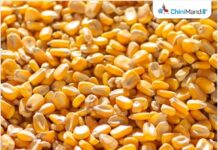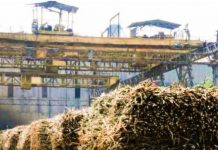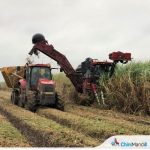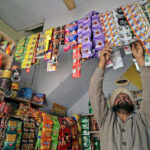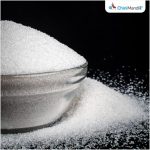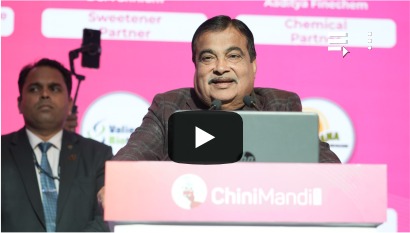In the evolving quest for sustainability, the Indian sugar industry stands at a pivotal crossroad where circular economy principles can transform agricultural residues into high-value commodities. One of the most promising opportunities lies in the commercial production of Asian mushrooms—such as Oyster, Shiitake, and Milky mushrooms—using sugarcane bagasse, an abundant and underutilised by-product of sugar mills.
This initiative not only diversifies income streams for sugar cooperatives but also aligns with the vision of Waste-to-Wealth, supporting rural entrepreneurship, employment generation, and resource-efficient farming.
Why Sugarcane Bagasse?
Bagasse, the fibrous residue left after sugarcane crushing, constitutes nearly 30–35% of cane weight. Traditionally used for boiler fuel or composting, a large portion remains unutilised or inefficiently managed. However, its rich cellulose, hemicellulose, and lignin content makes it a suitable substrate for mushroom cultivation, especially after simple pretreatment and fortification.
Compared to other lignocellulosic agricultural residues (wheat straw, paddy straw), bagasse offers better availability, lower cost, and minimal transportation losses for sugar mills with integrated setups.
Asian Mushrooms: The Ideal Fit
The demand for edible and medicinal mushrooms is surging across Asia and globally due to their high nutritional value, immunity-boosting properties, and low carbon footprint. Among the varieties that grow well on bagasse:
Oyster Mushroom (Pleurotus ostreatus)
>Fast-growing, low-cost, beginner-friendly, and highly nutritious.
>Milky Mushroom (Calocybe indica)
>Heat-tolerant variety ideal for Indian climatic zones with simple cultivation methods.
>Shiitake Mushroom (Lentinula edodes)
>Premium value mushroom with medicinal properties; requires supplementation of hardwood sawdust.
>These mushrooms require minimal space, water, and capital investment, making them an ideal value-added activity for sugarcane farming clusters or mill-owned agro-centres.
Bagasse to Mushroom: Process Flow
Collection and Drying of Bagasse
Moisture is reduced to 10–12% to prevent spoilage and enable proper sterilization.
>Pretreatment and Enrichment
Bagasse is chopped, mixed with supplements (wheat bran, rice bran), adjusted to ideal pH and moisture (60–70%)
>Sterilisation and Inoculation
Substrate is sterilized (steam or chemical) and inoculated with selected mushroom spawn.
Incubation and Fruiting
Cultivation units require 25–30°C temperature and 70–80% humidity for 3–4 weeks, depending on the mushroom species.
>Harvesting and Marketing
Fresh mushrooms are harvested in cycles and can be sold locally or dried for export and pharmaceutical use.
Economic Viability
>Particulars Estimate (per 1 ton bagasse)
>Yield (fresh mushrooms) 250–300 kg
>Market rate (avg.) ₹100–₹200/kg
Gross Income ₹25,000–₹60,000
Net Profit ₹12,000–₹30,000
Cultivation Cycle 4–6 weeks
Such short-cycle returns with low input cost offer attractive margins, especially when operated by Farmer Producer
.> Organisations (FPOs), women SHGs, or cooperative units.
Benefits to the Sugar Sector
✅ Value Addition of Bagasse – From low-value biomass to high-value food product.
✅ Income Diversification – Parallel agri-business that supplements mill income.
✅ Waste Management – Reduced disposal costs and carbon footprint.
✅ Employment Generation – Mushroom farming units can employ 5–10 rural youth per 1-ton operation.
✅ Export Potential – Dehydrated mushrooms have high demand in Asian and European markets.
✅ Alignment with SDGs – Supports Goals 1, 2, 8, 12, and 13 (no poverty, zero hunger, decent work, responsible production, and climate action).
Way Forward
To integrate this concept across sugarcane zones, following steps are suggested:
🔹 Pilot projects in 10–15 cooperative mills under State Sugar Federation.
🔹 Technical collaboration with institutes like ICAR-DMR (Solan), TERI, or VSI Pune.
🔹 Training programs for rural youth and SHGs.
🔹 Capital subsidy under SFAC or NABARD’s agri-infra schemes.
🔹 Linkage with FPOs and private exporters for marketing.
Conclusion
Harnessing sugarcane bagasse for mushroom cultivation is a scientifically viable and economically promising opportunity that exemplifies the spirit of agro-industrial synergy. For sugar factories aiming at sustainability, profitability, and social responsibility, “Mushroom from Bagasse” is not just a concept—it is the next frontier.
P.G. Medhe is the former Managing Director of Shri Chhatrapati Rajaram Sahakari Sakhar Karkhana Ltd and sugar industry analyst. He can be contacted at +91 9822329898.




